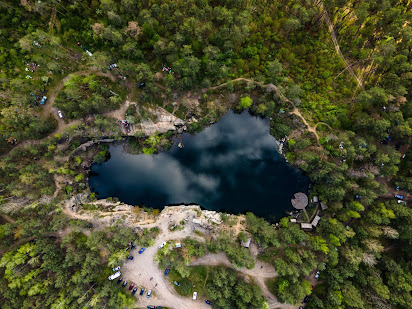Whilst most clouds are formed through the water cycle, some clouds have origins of a slightly different nature. Pyrocumulonimbus (pyroCb) are clouds connected to volcanic activity or fires. The intense heating of air ascends, condensing when the rising air becomes saturated due to cooling. They are quite common, leading to the formation of small clouds over fires in the environment, think of them like Frozen's Olaf's personal flurry, except they are created through intense heat.
For this article the focus will be on pyroCb clouds created by fires. Tory and Thurston (2015) conducted a literature review of pyroCb touching on how they are similar to thunderstorm (dynamics), but rather than requiring warm moist low-level air, the air needs to be warm and dry. They also discuss how the pollution in the clouds caused by the fire, delays rain and hail formation, resulting in the upper cloud regions containing significantly more snow and ice, far less hail in the middle regions and consequently less rainfall.
The presence of a pyroCb is potentially a serious issue, their presence has often been associated with fire behaviour that is highly unpredictable. It is discussed that this is primarily the case for buoyancy driven plumes, rather than bent plumes formed by wind driven fires. However, much of the evidence is generated from human observation and reveals the scope for further research into these speculations. Buoyancy plumes are thought to lead to indrafts, bringing fresh air to the fire, intensifying the flames.
Plumes can also carry burning embers or firebrands up and away from the main fire, to new dry areas creating new fires. PyroCb clouds have the potential to incite lighting that reaches from the cloud to the ground, this too can ignite new fires.
Overall the formation of pyroCb clouds requires significant volumes of fire heated air and a source of moisture from the environment or the fires fuel source is also necessary. It is primarily large fires that create pyroCb clouds, due to these large volumes of hot air required. Changing climates, has resulted in an increase of forest and grassland fires, the intensity and severity of these fires has also increased. As such, the formation of pyroCb clouds will likely also increase in frequency. In tern leading to fires that spread further and faster (due to cloud to ground lightening or the transportation of embers).
This was a review of the paper Tory, K.J. and Thurston, W., 2015. Pyrocumulonimbus: A literature review. Bushfire and Natural Hazards CRC: East Melbourne, VIC, Australia.
Further reading:
Fromm, M., Lindsey, D.T., Servranckx, R., Yue, G., Trickl, T., Sica, R., Doucet, P. and Godin-Beekmann, S., 2010. The untold story of pyrocumulonimbus. Bulletin of the American Meteorological Society, 91(9), pp.1193-1210.





No comments:
Post a Comment